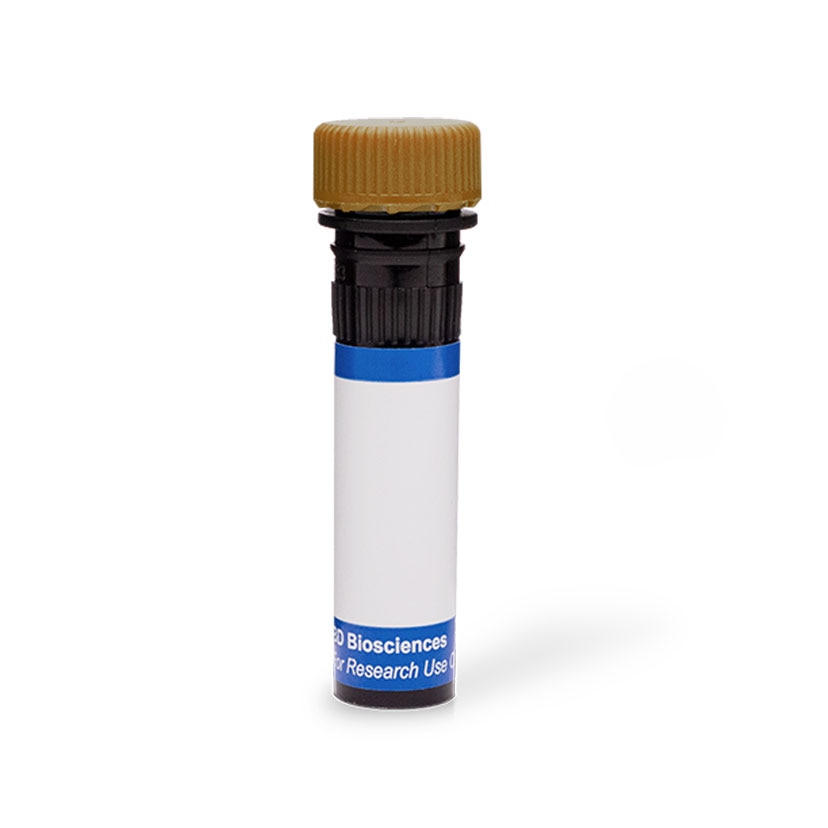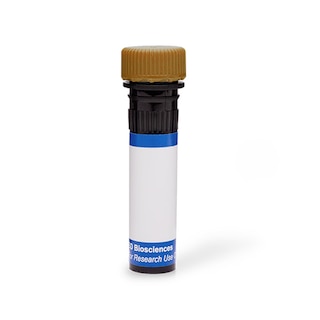-
Reagents
- Flow Cytometry Reagents
-
Western Blotting and Molecular Reagents
- Immunoassay Reagents
-
Single-Cell Multiomics Reagents
- BD® OMICS-Guard Sample Preservation Buffer
- BD® OMICS-One Protein Panels
- BD® AbSeq Assay
- BD® Single-Cell Multiplexing Kit
- BD Rhapsody™ ATAC-Seq Assays
- BD Rhapsody™ Whole Transcriptome Analysis (WTA) Amplification Kit
- BD Rhapsody™ TCR/BCR Next Multiomic Assays
- BD Rhapsody™ Targeted mRNA Kits
- BD Rhapsody™ Accessory Kits
-
Functional Assays
-
Microscopy and Imaging Reagents
-
Cell Preparation and Separation Reagents
-
Promotions
-
Spectral Sorter Promotion
-
BD Primer Program
-
New Lab Promotion
-
BD FACSLyric™ Flow Cytometers 50th Anniversary Promo
-
BD FACSAria™ Customer Loyalty Promotion
-
FlowJo™ Software Promotion
-
BD® Research Cloud Promotion
-
30% off + Free Shipping on BD Horizon Brilliant™ Violet and Ultraviolet Reagents!
-
30% off BD Horizon RealYellow ™ & BD Horizon RealBlue™ Reagents!
-
Spectral Sorter Promotion
-
Training
- Flow Cytometry Basic Training
-
Product-Based Training
- BD Accuri™ C6 Plus Cell Analyzer
- BD FACSAria™ Cell Sorter Cell Sorter
- BD FACSCanto™ Cell Analyzer
- BD FACSDiscover™ A8 Cell Analyzer
- BD FACSDiscover™ S8 Cell Sorter
- BD FACSDuet™ Sample Preparation System
- BD FACSLyric™ Cell Analyzer
- BD FACSMelody™ Cell Sorter
- BD FACSymphony™ Cell Analyzer
- BD LSRFortessa™ Cell Analyzer
- Advanced Training
-
- BD® OMICS-Guard Sample Preservation Buffer
- BD® OMICS-One Protein Panels
- BD® AbSeq Assay
- BD® Single-Cell Multiplexing Kit
- BD Rhapsody™ ATAC-Seq Assays
- BD Rhapsody™ Whole Transcriptome Analysis (WTA) Amplification Kit
- BD Rhapsody™ TCR/BCR Next Multiomic Assays
- BD Rhapsody™ Targeted mRNA Kits
- BD Rhapsody™ Accessory Kits
-
- BD Accuri™ C6 Plus Cell Analyzer
- BD FACSAria™ Cell Sorter Cell Sorter
- BD FACSCanto™ Cell Analyzer
- BD FACSDiscover™ A8 Cell Analyzer
- BD FACSDiscover™ S8 Cell Sorter
- BD FACSDuet™ Sample Preparation System
- BD FACSLyric™ Cell Analyzer
- BD FACSMelody™ Cell Sorter
- BD FACSymphony™ Cell Analyzer
- BD LSRFortessa™ Cell Analyzer
- United States (English)
-
Change country/language
Old Browser
This page has been recently translated and is available in French now.
Looks like you're visiting us from {countryName}.
Would you like to stay on the current country site or be switched to your country?
BD Horizon™ RB705 Mouse Anti-Human CD152 (CTLA-4)
Clone BNI3 (RUO)

Multicolor flow cytometric analysis of CD152 (CTLA-4) expression on activated Human peripheral blood lymphocytes. Phytohemagglutinin (PHA)-activated (3 days) Human peripheral blood mononuclear cells (PBMC) were preincubated with Human BD Fc Block™ (Cat. No. 564219/564220). The cells were then stained with PE Mouse Anti-Human CD3 antibody (Cat. No. 555333/561808) and with either BD Horizon™ RB705 Mouse IgG2a, κ Isotype Control (Cat. No. 570254; Left Plot) or BD Horizon™ RB705 Mouse Anti-Human CD152 (CTLA-4) antibody (Cat. No. 570590/570678; Right Plot). DAPI (4',6-Diamidino-2-Phenylindole, Dihydrochloride) Solution (Cat. No. 564907) was added to cells right before analysis. The bivariate pseudocolor density plot showing the correlated expression of CD152 (CTLA-4) [or Ig Isotype control staining] versus CD3 was derived from gated events with the forward and side light-scatter characteristics of viable (DAPI-negative) lymphocytes. Flow cytometry and data analysis were performed using a BD LSRFortessa™ Cell Analyzer System and FlowJo™ Software.


Multicolor flow cytometric analysis of CD152 (CTLA-4) expression on activated Human peripheral blood lymphocytes. Phytohemagglutinin (PHA)-activated (3 days) Human peripheral blood mononuclear cells (PBMC) were preincubated with Human BD Fc Block™ (Cat. No. 564219/564220). The cells were then stained with PE Mouse Anti-Human CD3 antibody (Cat. No. 555333/561808) and with either BD Horizon™ RB705 Mouse IgG2a, κ Isotype Control (Cat. No. 570254; Left Plot) or BD Horizon™ RB705 Mouse Anti-Human CD152 (CTLA-4) antibody (Cat. No. 570590/570678; Right Plot). DAPI (4',6-Diamidino-2-Phenylindole, Dihydrochloride) Solution (Cat. No. 564907) was added to cells right before analysis. The bivariate pseudocolor density plot showing the correlated expression of CD152 (CTLA-4) [or Ig Isotype control staining] versus CD3 was derived from gated events with the forward and side light-scatter characteristics of viable (DAPI-negative) lymphocytes. Flow cytometry and data analysis were performed using a BD LSRFortessa™ Cell Analyzer System and FlowJo™ Software.

Multicolor flow cytometric analysis of CD152 (CTLA-4) expression on activated Human peripheral blood lymphocytes. Phytohemagglutinin (PHA)-activated (3 days) Human peripheral blood mononuclear cells (PBMC) were preincubated with Human BD Fc Block™ (Cat. No. 564219/564220). The cells were then stained with PE Mouse Anti-Human CD3 antibody (Cat. No. 555333/561808) and with either BD Horizon™ RB705 Mouse IgG2a, κ Isotype Control (Cat. No. 570254; Left Plot) or BD Horizon™ RB705 Mouse Anti-Human CD152 (CTLA-4) antibody (Cat. No. 570590/570678; Right Plot). DAPI (4',6-Diamidino-2-Phenylindole, Dihydrochloride) Solution (Cat. No. 564907) was added to cells right before analysis. The bivariate pseudocolor density plot showing the correlated expression of CD152 (CTLA-4) [or Ig Isotype control staining] versus CD3 was derived from gated events with the forward and side light-scatter characteristics of viable (DAPI-negative) lymphocytes. Flow cytometry and data analysis were performed using a BD LSRFortessa™ Cell Analyzer System and FlowJo™ Software.


BD Horizon™ RB705 Mouse Anti-Human CD152 (CTLA-4)

Regulatory Status Legend
Any use of products other than the permitted use without the express written authorization of Becton, Dickinson and Company is strictly prohibited.
Preparation And Storage
Recommended Assay Procedures
BD® CompBeads can be used as surrogates to assess fluorescence spillover (compensation). When fluorochrome conjugated antibodies are bound to BD® CompBeads, they have spectral properties very similar to cells. However, for some fluorochromes there can be small differences in spectral emissions compared to cells, resulting in spillover values that differ when compared to biological controls. It is strongly recommended that when using a reagent for the first time, users compare the spillover on cells and BD® CompBeads to ensure that BD® CompBeads are appropriate for your specific cellular application.
Product Notices
- Please refer to www.bdbiosciences.com/us/s/resources for technical protocols.
- This reagent has been pre-diluted for use at the recommended Volume per Test. We typically use 1 × 10^6 cells in a 100-µl experimental sample (a test).
- An isotype control should be used at the same concentration as the antibody of interest.
- Please refer to http://regdocs.bd.com to access safety data sheets (SDS).
- When using high concentrations of antibody, background binding of this dye to erythroid fragments produced by ammonium chloride-based lysis, such as with BD Pharm Lyse™ Lysing Buffer (Cat. No. 555899), has been observed when the antibody conjugate was present during the lysis procedure. This may cause nonspecific staining of target cells, such as leukocytes, which have bound the resulting erythroid fragments. This background can be mitigated by any of the following: titrating the antibody conjugate to a lower concentration, fixing samples with formaldehyde, or removing erythrocytes before staining (eg, gradient centrifugation or pre-lysis with wash). This background has not been observed when cells were lysed with BD FACS™ Lysing Solution (Cat. No. 349202) after staining.
- Please observe the following precautions: We recommend that special precautions be taken (such as wrapping vials, tubes, or racks in aluminum foil) to protect exposure of conjugated reagents, including cells stained with those reagents, to any room illumination. Absorption of visible light can significantly affect the emission spectra and quantum yield of tandem fluorochrome conjugates.
- Caution: Sodium azide yields highly toxic hydrazoic acid under acidic conditions. Dilute azide compounds in running water before discarding to avoid accumulation of potentially explosive deposits in plumbing.
- For fluorochrome spectra and suitable instrument settings, please refer to our Multicolor Flow Cytometry web page at www.bdbiosciences.com/colors.
- Human donor specific background has been observed in relation to the presence of anti-polyethylene glycol (PEG) antibodies, developed as a result of certain vaccines containing PEG, including some COVID-19 vaccines. We recommend use of BD Horizon Brilliant™ Stain Buffer in your experiments to help mitigate potential background. For more information visit https://www.bdbiosciences.com/en-us/support/product-notices.
- Cy is a trademark of Global Life Sciences Solutions Germany GmbH or an affiliate doing business as Cytiva.
- For U.S. patents that may apply, see bd.com/patents.
Data Sheets
Companion Products

Recently Viewed
The BNI3 monoclonal antibody specifically binds to the human cytolytic T lymphocyte-associated antigen (CTLA-4), also known as CD152. CTLA-4 is transiently expressed on activated CD28+ T cells and binds to CD80 and CD86 present on antigen presenting cells (APC) with high avidity. This interaction appears to deliver a negative regulatory signal to the T cell. Recent reports indicate that CTLA-4 is also expressed on B cells when cultured with activated T cells, suggesting a role for CTLA-4 in the regulation of B-cell response. Immobilized BNI3 antibody enhances T-cell proliferation induced by antibody-mediated crosslinking of CD3 and CD28. Recent studies have shown that CD152 can be expressed by regulatory T (Treg) cells. After cellular fixation and permeabilization, the BNI3 antibody can stain intracellular CD152 expressed in T cells including Treg cells. Clone BNI3 was studied in the VI Leukocyte Typing Workshop.

Development References (10)
-
Cabezon R, Sintes J, Llinas L, Benitez-Ribas D. Analysis of HLDA9 mAbs on plasmacytoid dendritic cell. Immunol Lett. 2011; 134(2):167-173. (Clone-specific: Flow cytometry). View Reference
-
Castan J, Klauenberg U, Kalmar P, Fleischer B, Broker BM. Expression of CTLA-4 (CD152) on human medullary CD4+ thymocytes. Med Microbiol Immunol (Berl). 1998; 187(1):49-52. (Immunogen: Fluorescence microscopy, Immunocytochemistry, Immunofluorescence, Immunohistochemistry). View Reference
-
Castan J, Tenner-Racz K, Racz P, Fleischer B, Broker BM. Accumulation of CTLA-4 expressing T lymphocytes in the germinal centres of human lymphoid tissues. Immunology. 1997; 90(2):265-271. (Immunogen: ELISA, Fluorescence microscopy, Immunofluorescence, Immunohistochemistry). View Reference
-
Healy ZR, Murdoch DM. OMIP-036: Co-inhibitory receptor (immune checkpoint) expression analysis in human T cell subsets.. Cytometry A. 2016; 89(10):889-892. (Clone-specific: Intracellular Staining/Flow Cytometry). View Reference
-
Kuiper HM, Brouwer M, Linsley PS, van Lier RA. Activated T cells can induce high levels of CTLA-4 expression on B cells. J Immunol. 1995; 155(4):1776-1783. (Biology). View Reference
-
Lindsten T, Lee KP, Harris ES, et al. Characterization of CTLA-4 structure and expression on human T cells. J Immunol. 1993; 151(7):3489-3499. (Biology). View Reference
-
Morton PA, Fu XT, Stewart JA, et al. Differential effects of CTLA-4 substitutions on the binding of human CD80 (B7-1) and CD86 (B7-2). J Immunol. 1996; 156(3):1047-1054. (Biology). View Reference
-
Rabe H, Lundell AC, Andersson K, Adlerberth I, Wold AE, Rudin A. Higher proportions of circulating FOXP3+ and CTLA-4+ regulatory T cells are associated with lower fractions of memory CD4+ T cells in infants.. J Leukoc Biol. 2011; 90(6):1133-40. (Clone-specific: Intracellular Staining/Flow Cytometry). View Reference
-
Santegoets SJ, Dijkgraaf EM, Battaglia A, et al. Monitoring regulatory T cells in clinical samples: consensus on an essential marker set and gating strategy for regulatory T cell analysis by flow cytometry.. Cancer Immunol Immunother. 2015; 64(10):1271-86. (Clone-specific: Intracellular Staining/Flow Cytometry). View Reference
-
Wang H, Shih CC, Waters JB, et al. CD152 (CTLA4) Workshop: Expression and function of CD152 on human T cells: A study using a mouse anti-human CD152 monoclonal antibody BNI3.1. In: Kishimoto T. Tadamitsu Kishimoto .. et al., ed. Leucocyte typing VI : white cell differentiation antigens : proceedings of the sixth international workshop and conference held in Kobe, Japan, 10-14 November 1996. New York: Garland Pub.; 1997:97-98.
Please refer to Support Documents for Quality Certificates
Global - Refer to manufacturer's instructions for use and related User Manuals and Technical data sheets before using this products as described
Comparisons, where applicable, are made against older BD Technology, manual methods or are general performance claims. Comparisons are not made against non-BD technologies, unless otherwise noted.
For Research Use Only. Not for use in diagnostic or therapeutic procedures.
